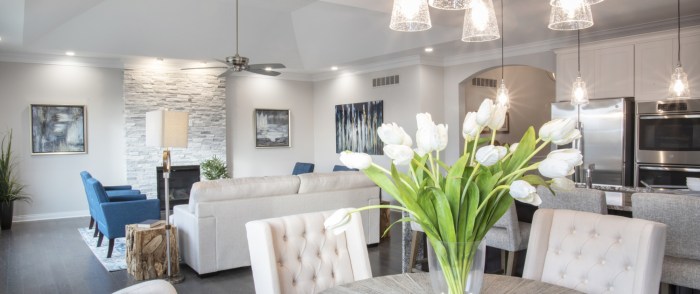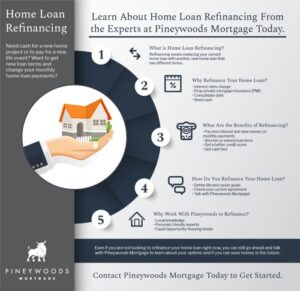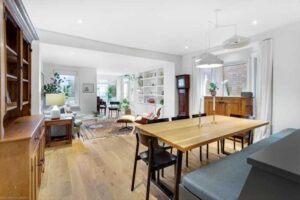
Staging vacant homes effectively can be the key to transforming a lifeless space into an inviting oasis that captures the attention of potential buyers. Imagine walking into a home that not only showcases its best features but also tells a story—this is the power of effective staging. By thoughtfully selecting furniture, colors, and decor, you can enhance buyer perception and create an emotional connection.
In this discussion, we will explore various home staging techniques, the importance of collaborating with real estate professionals, and how different property types require tailored staging approaches. From residential homes to green real estate, each aspect plays a critical role in making vacant properties irresistible to buyers.
Home Staging Techniques

Staging vacant homes is a pivotal step in the selling process, as it significantly enhances buyer perception and can lead to quicker sales at higher prices. A well-staged home allows potential buyers to visualize their future in the space, making it feel welcoming and livable rather than empty and cold. This emotional connection can be the driving force in their decision-making process.Selecting furniture and decor is crucial in showcasing the home’s best features.
The right choices can highlight desirable aspects like spaciousness, natural light, and architectural details. It’s essential to select items that complement the home’s style while providing a cohesive look throughout the space, guiding the viewer’s eye to appreciate each area fully.
Furniture and Decor Selection
When choosing furniture and decor for staging, consider how each piece will enhance the home’s appeal. The objective is to make each room feel inviting and functional. Here are key points to keep in mind:
- Scale and Proportion: Select furniture that fits the size of the rooms. Oversized pieces in small spaces can make a room feel cramped, while too-small items can create an awkward atmosphere.
- Style Cohesion: Aim for a consistent theme that reflects the character of the home. Whether modern, traditional, or eclectic, the decor should resonate with potential buyers’ tastes.
- Neutral Colors: Opt for neutral color palettes that allow buyers to envision their own style. Soft grays, beiges, and whites can create a blank canvas that appeals to a wide audience.
- Functional Layouts: Arrange furniture to demonstrate the purpose of each room. Highlight areas for relaxation, dining, or entertaining, ensuring flow and accessibility.
- Accessorizing: Use accessories such as rugs, pillows, and wall art to add warmth without overwhelming the space. These elements can bring personality while keeping the overall look clean.
Lighting and Color Schemes
Lighting and color schemes play a vital role in creating an inviting atmosphere that can significantly impact buyer interest. The right combination can transform a space, making it feel open and bright.
- Natural Light Maximization: Draw attention to windows and let in as much natural light as possible. Sheer curtains can keep spaces bright while providing privacy.
- Layered Lighting: Incorporate a mix of ambient, task, and accent lighting. Ceiling fixtures, table lamps, and floor lamps can make each room feel warm and welcoming, highlighting key features.
- Color Psychology: Utilize colors that evoke certain feelings. Blues and greens are calming, while yellows and oranges can create inviting warmth. This can affect how buyers feel about a home.
- Accent Walls: Consider using a bold color on one wall to add interest and depth without overwhelming the room. This can help create a focal point that draws the eye.
“Staging is not just about decorating; it’s about creating an emotional connection between the buyer and the home.”
Through effective staging techniques, vacant homes can be transformed into attractive and desirable spaces that resonate with potential buyers, ultimately leading to more successful sales.
Collaborating with Real Estate Professionals

In the world of home staging, collaborating with real estate professionals can significantly enhance the effectiveness of the process. Real estate agents not only bring their expertise in the market but also their understanding of buyer preferences. Their involvement in staging can make a substantial difference in how properties are perceived and sold. Real estate agents can assist in the staging process in various ways.
They are often the first point of contact for sellers and can provide valuable insights into current market trends and buyer expectations. By understanding the demographics of potential buyers, agents can guide homeowners on which areas to focus on during the staging process. This collaboration ensures that the staged home appeals to the right audience, enhancing the likelihood of a quick sale.
Strategies for Realtors to Market Staged Homes Effectively
To maximize the impact of staging, realtors can implement several marketing strategies. These strategies not only showcase the home in its best light but also attract a wider pool of potential buyers. Some of these strategies include:
- High-Quality Photography: Utilizing professional photography to capture the essence of a staged home is vital. Images should highlight the home’s best features, focusing on well-lit spaces and attractive angles that convey warmth and livability.
- Virtual Tours: Offering virtual tours can expand the reach to buyers who may not be able to visit in person. These tours allow potential buyers to experience the home’s layout and staging from the comfort of their own homes.
- Targeted Online Marketing: Real estate agents can leverage social media platforms and real estate websites to target specific demographics. Tailoring ads based on buyer behavior and preferences can lead to effective outreach and engagement.
- Open Houses: Hosting well-advertised open houses can draw in numerous interested buyers. Staged homes should be presented during these events to create a lasting impression and encourage offers.
- Staging Consultations: Providing potential buyers with insights on the staging process can enhance their perception of the home. Educated buyers often feel more connected to a well-staged space.
Building relationships with staging professionals can elevate property sales in multiple ways. When realtors collaborate with experienced stagers, they benefit from a shared vision that aligns with market demands. Staging professionals can offer unique insights and innovative ideas that can transform a property into a desirable home. This synergy between realtors and stagers not only enhances the aesthetic appeal but also increases the perceived value of the property.
“A well-staged home can sell up to 73% faster than its unstaged counterpart.”
By investing time in these relationships, real estate professionals can ensure that they are providing clients with optimal staging solutions that lead to successful sales.
Staging for Different Property Types
Staging is a crucial element in presenting properties to potential buyers and tenants. However, the approach taken can vary significantly based on the type of property being staged. Understanding how to effectively stage different property types—such as residential homes, commercial properties, condominiums, and foreclosures—can make a substantial difference in attracting the right audience and closing a deal.
Staging Approaches for Residential Homes versus Commercial Properties
Staging residential homes typically focuses on creating a warm, inviting atmosphere that reflects a potential buyer’s lifestyle. This involves selecting furniture and décor that appeals to family dynamics and personal comfort. In contrast, commercial properties require a more strategic approach that emphasizes functionality and adaptability to businesses. For residential homes, key staging elements include:
- Neutral color palettes that allow buyers to envision their own style.
- Furniture arrangements that facilitate flow and highlight space.
- Homey touches like fresh flowers, cozy textiles, and warm lighting.
On the other hand, when staging commercial properties, the following considerations are vital:
- Open spaces showcasing versatility for various business types.
- Incorporation of technology displays that emphasize modern capabilities.
- Professional branding elements that resonate with potential business tenants.
Specific Considerations for Staging Real Estate Condominiums and Foreclosures
Staging condominiums often involves maximizing smaller spaces to make them feel expansive and appealing. It’s essential to highlight unique features, such as views or outdoor spaces, that can differentiate them from other living options. When staging foreclosures, the focus shifts to showcasing the property’s potential. Here are important strategies to consider:
- Addressing any necessary repairs while maintaining a budget.
- Utilizing minimalistic furnishings to prevent overwhelming the space.
- Emphasizing the property’s strengths, such as location or architectural details, through targeted staging choices.
Guidelines for Staging Green Real Estate to Highlight Sustainability Features
Staging green real estate requires an emphasis on sustainability and eco-friendly features. This can significantly enhance appeal to environmentally conscious buyers. Staging should not only highlight green credentials but also create an inviting atmosphere that encourages sustainable living. Key guidelines for effectively staging green real estate include:
- Using furniture made from sustainable materials, such as reclaimed wood or recycled metal.
- Showcasing energy-efficient appliances and fixtures as focal points in kitchen and bathroom staging.
- Incorporating plants and natural elements to enhance the indoor air quality and promote a connection to nature.
“A well-staged green home can not only attract buyers but also educate them on the benefits of sustainable living.”
Closure
In summary, staging vacant homes effectively is not just about aesthetics; it’s about creating an atmosphere that resonates with buyers and enhances the overall appeal of the property. By utilizing the right techniques, collaborating with real estate agents, and adapting your approach based on the property type, you can significantly elevate property sales. So, whether you’re a homeowner or a real estate professional, embracing these strategies can make a profound difference in the market.
FAQ Insights
Why is home staging important?
Home staging helps create a desirable environment that allows potential buyers to envision themselves living in the space, ultimately leading to quicker sales at higher prices.
What are the best furniture choices for staging?
Select furniture that complements the home’s layout and highlights its features, choosing neutral tones to appeal to a broader audience.
How can lighting impact staging?
Proper lighting can enhance the mood of a space, making it feel warm and inviting, so consider both natural and artificial light sources.
Is it necessary to hire a staging professional?
While not mandatory, a staging professional can provide expertise and resources that can significantly improve the overall presentation of a property.
How do I stage a home on a budget?
Utilize existing furnishings, declutter, and make small improvements like fresh paint or new accents to create a polished look without breaking the bank.





